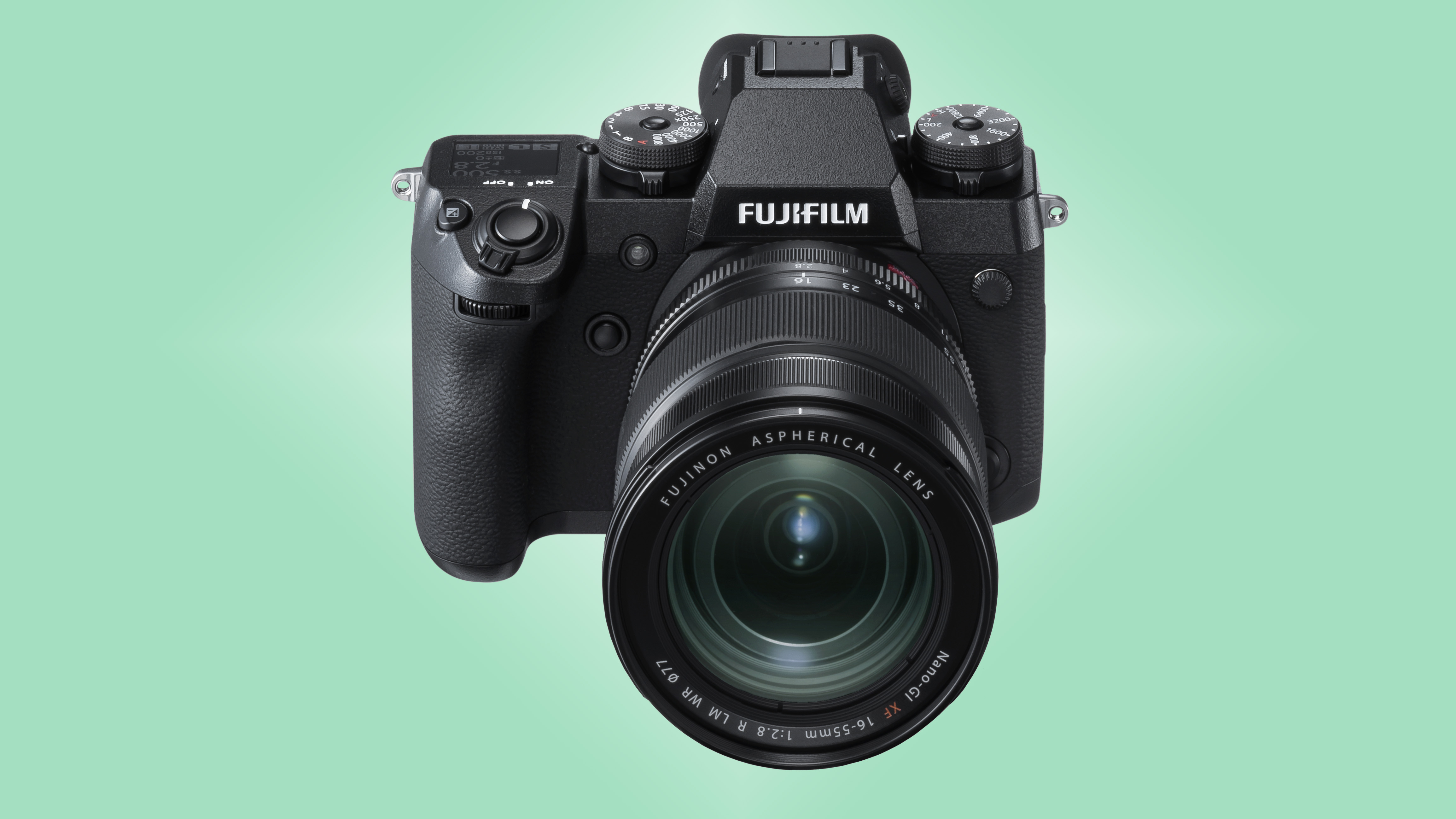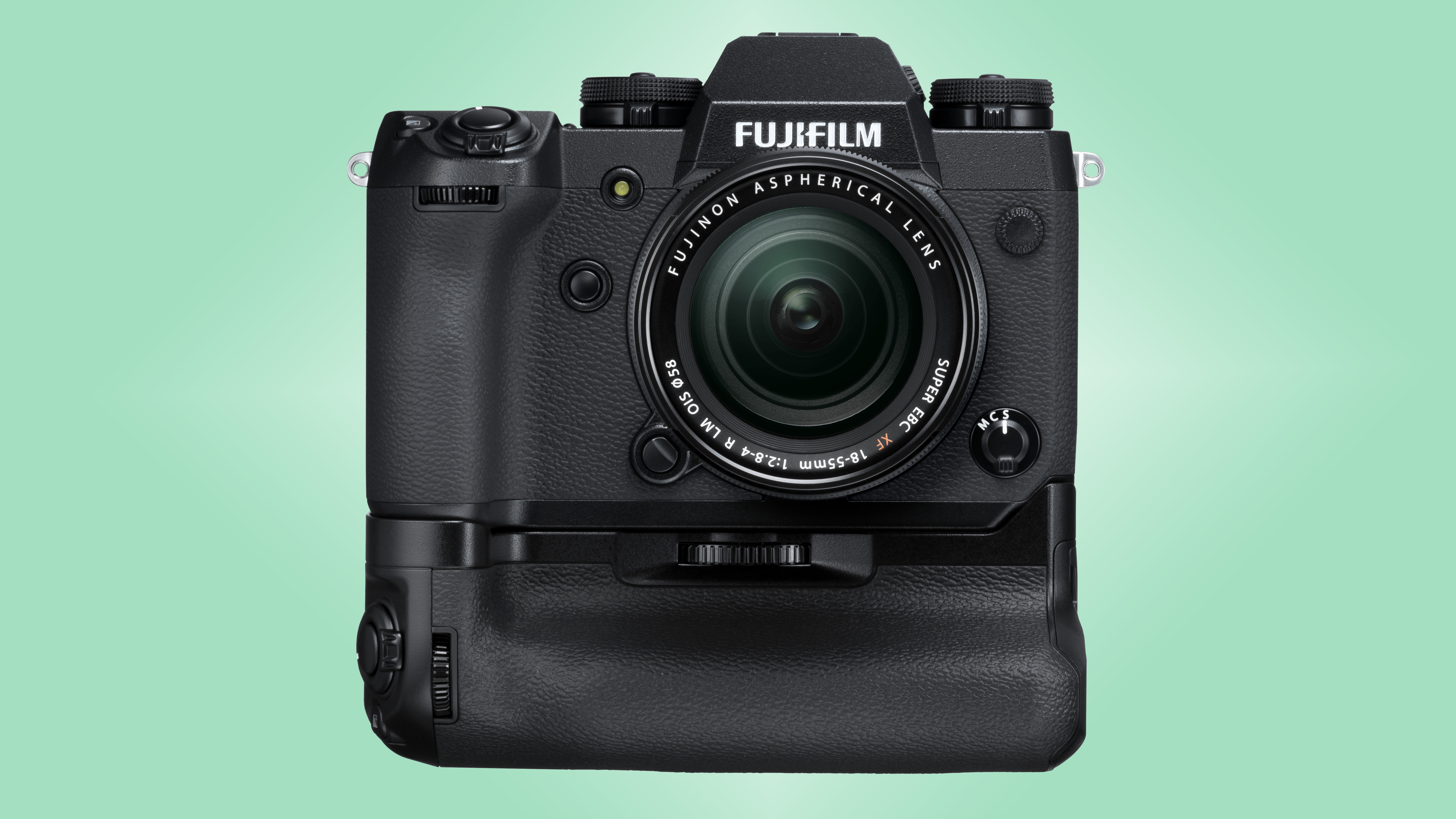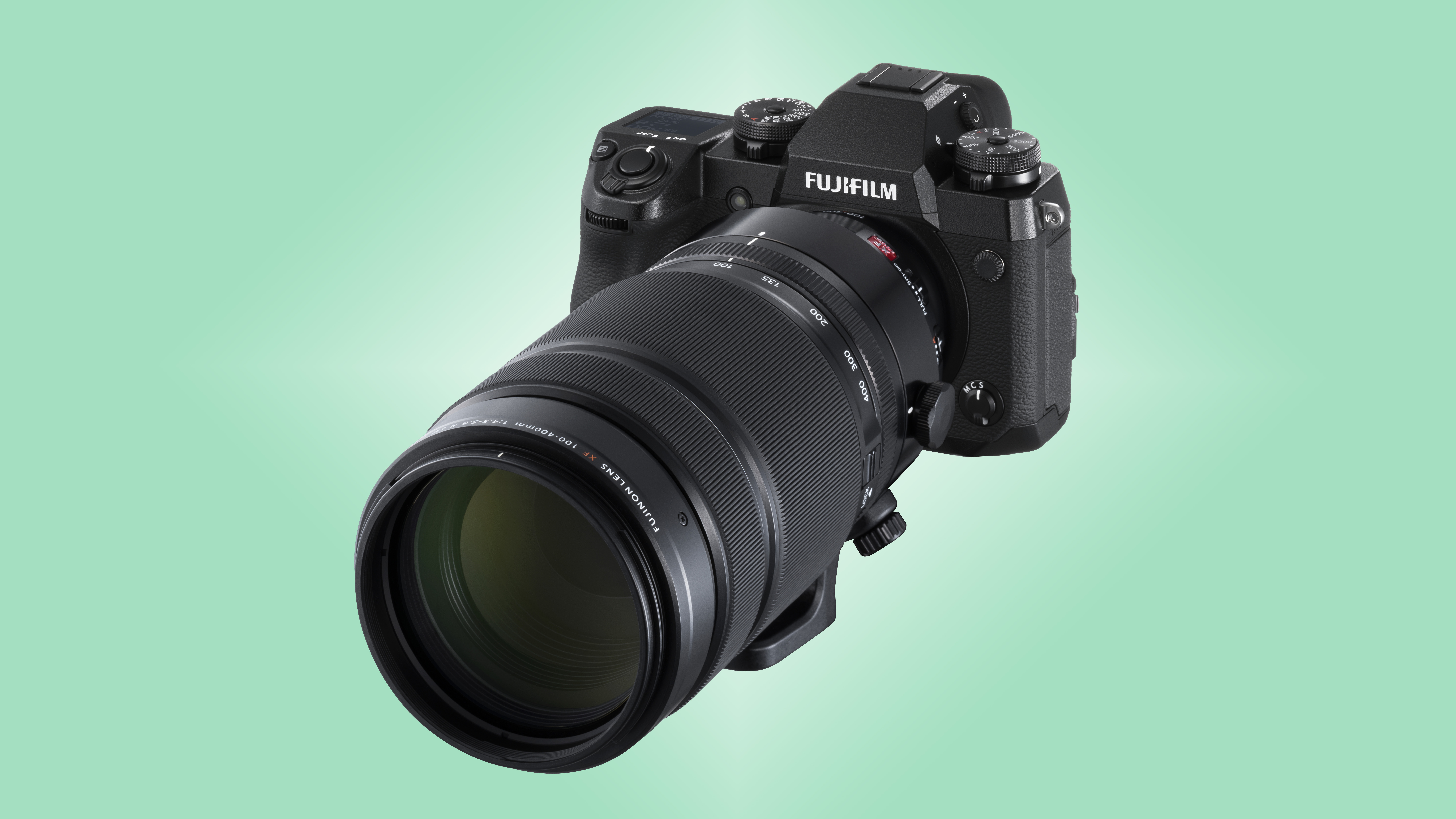
Fujifilm has announced the X-H1, its new flagship X Series mirrorless camera that sits above both the X-T2 and X-Pro2.
Aimed at professional photographers and videographers, the X-H1 is the first X Series camera to feature in-body image stabilization (IBIS for short).
Together with a specially developed dual-processor, the new 5-axis IBIS provides up to a maximum of 5.5 stops of image stabilization when used with all XF lenses that don't include optical image stabilization (OIS) technology.
Fujifilm has also refined the way in which the image stabilization system is manufactured. A laser measurement device is used to control component flatness and position with twice the precision of standard components, while a new spring mechanism has been included to reduce micro-vibrations caused by operation of the mechanical shutter.
The X-H1 may have a new IS system, but Fujifilm has stuck with the 24.3MP X-Trans CMOS III sensor that's impressed in many recent Fujifilm cameras including the X-T2 and X100F.









Ready for anything
The X-H1 is both dust and water-resistant, and can operate in temperatures as low as -10°C. It's similar to the X-T2 in those respects, but to underline its pro credentials the X-H1 also uses a 25% thicker magnesium alloy compared to the X-T2.
Fujifilm has also revealed that it's modified the structure for attaching the lens mount, resulting in a more compact size and lighter weight body than if it had stuck to the previous design, while the X-H1 also sports a high-quality scratch-resistant coating.
Get daily insight, inspiration and deals in your inbox
Sign up for breaking news, reviews, opinion, top tech deals, and more.
Like the larger, medium-format GFX 50S, the X-H1 sports a small top plate 1.28-inch LCD that displays key shooting information. Its arrival means there’s no place for a dedicated exposure compensation dial – something that's become a bit of a design trait of Fujifilm cameras. We found the fiddly little button that replaced it on the GFX 50S a bit awkward to use, so hopefully this has been refined on the X-H1.
Fujifilm hasn't skimped on the viewfinder for the X-H1 either, with a 3.69-million dot resolution and a large and bright 0.75x magnification. The display also promises to be incredibly smooth, with a display time lag of just 0.005 seconds and a frame rate of 100fps.
As we first saw on the X-T2, the X-H1 features a three-direction, double-jointed 3.0-inch rear display, allowing you to pull the screen outwards and away from the body when the camera is tilted on its side as well as when shooting in landscape format. The X-H1 also gains touchscreen functionality.
Listening to feedback
Fujifilm has always been very good at listening to feedback from photographers and channeling this into future models, and it's done so again with the X-H1.
The X-H1 sports a larger handgrip design than the X-T2, and also features a new leaf-spring switch for the shutter release button. This has been designed to give a stable feel when holding the camera, as well as to facilitate easy operation of the shutter release.
The X-H1 now features a dedicated AF-On button at the rear of the camera
Back-button focusing is a technique that many photographers swear by, so the X-H1 now features a dedicated AF-On button at the rear of the camera, allowing autofocus to be activated with the thumb. There's also a dedicated focus lever, while many of the X-H1's buttons on the rear of the camera have been enlarged over previous models.
Extensive video features
While Fujifilm doesn't want the X-H1 to be seen as a video-first camera, as the Panasonic Lumix GH5 is, the new camera does sport a comprehensive set of video features. It's capable of shooting DCI 4K (4096 xPanasonic Lumix GH5 2160) at 24p and 4K (3840 x 2160) at 30p, and can also shoot at 120p in Full HD.
With the ability to record at a high bit rate of 200Mbps, the X-H1 can shoot F-log, and also offers a 400% dynamic range setting (approximately 12 stops). There's also a new ETERNA film simulation setting that Fujifilm reckons is ideal for shooting movies as it simulates the look of cinematic film, creating understated colors and rich shadow tones.
Improved performance
The X-T2's autofocus system impressed when we tested it, and Fujifilm has tinkered with AF algorithm on the X-H1 to enhance the performance further.
For low-light shooting, the phase detection autofocus has been improved by approximately 1.5 stops from 0.5EV to -1.0EV, while the range at minimum aperture has been expanded from f/8 to f/11. This should enhance performance when using the camera with teleconverters and lenses like the XF100-400mm f/4.5-5.6 R LM OIS WR, as phase-detection autofocus can now be used.
Fujifilm also reckons it's improved the AF-C performance for the X-H1, which should see better results when shooting finely-detailed surface textures, wild birds and wild animals.
The X-H1 is capable of shooting at up to 14fps (with the electronic shutter) and 8fps with the mechanical shutter. The dedicated VPB-XH1 battery grip enhances the performance though, increasing the burst speed of the X-H1 to 11fps (with the mechanical shutter), while the NP-W126S battery should deliver 310 shots.
The Fujifilm X-H1 will be available from March, priced at $1899.95 / £1,699 (body-only) or $2199.95 / £1,949 with the VPB-XH1 battery grip in the US and the UK. In Australia, the X-H1 is bundled with the Vertical Power Boost Grip with a price tag of $3,399.
Phil Hall is an experienced writer and editor having worked on some of the largest photography magazines in the UK, and now edit the photography channel of TechRadar, the UK's biggest tech website and one of the largest in the world. He has also worked on numerous commercial projects, including working with manufacturers like Nikon and Fujifilm on bespoke printed and online camera guides, as well as writing technique blogs and copy for the John Lewis Technology guide.
